Which LED bulbs are better: how to choose
A few years ago, LED lamps were very expensive, which is why they were rarely used. With the development of technology, prices became lower and lower, the parameters of lamps are getting better. And today, many people want to choose an LED lamp, but they get lost in a wide variety of models and a range of prices for lamps of the same luminous power. What is the difference and what it depends on - in the article.
The content of the article
Selection by technical parameters
The choice of an LED lamp for an apartment or house must start with the technical characteristics. It was incandescent lamps that had only power, and even the size of the base.
LED lamps are more serious equipment, in which, in addition to a crystal that emits light, there is also a built-in voltage converter - a driver that converts an alternating mains voltage into 12 volts DC. So for the right choice, you will have to familiarize yourself with some technical nuances.
Power and luminous flux
Power is measured in watts. Abbreviated in Russian it is "W", in English designation by the letter W. This value has traditionally been used to determine the luminous efficiency of incandescent lamps. And so it continues, although modern lighting devices have many times lower ratings, and they shine as well. This is what we will understand.
At the current stage of technological development, LED lamps are considered the most economical: with the consumption of a minimum amount of electricity, they generate more light. If we compare them with incandescent lamps, then they are almost 10 times more efficient. This means that where there used to be a 100-watt Ilyich lamp, a 9-10 W LED lamp should be installed. A good way to significantly reduce your electricity bill. To make it easier to choose an LED lamp by power, there is a table for matching the power of light sources of different types.
| Incandescent lamps | Luminescent and energy saving | LED | Light flow |
|---|---|---|---|
| 20 watts | 5-7 W | 2-3 W | 250 lm |
| 40 watts | 10-13 W | 4-5 W | 400 lm |
| 60 watts | 15-16 watts | 6-10 watts | 700 lm |
| 75 watts | 18-20 watts | 10-12 watts | 900 lm |
| 100 watts | 25-30 watts | 12-15 watts | 1200 lm |
| 150 watts | 40-50 W | 18-20 watts | 1800 lm |
| 200 watts | 60-80 W | 25-30W | 2500 lm |
Today, stores have lamps of various types - incandescent, halogen, energy-saving, LED. They all have different effectiveness. And if you do not have a correspondence table at hand, you can focus on the luminous flux created by the lamp. As a basis, you can take all the same incandescent lamps - we are used to them, we have been using them for a long time and have a good idea of how much light, for example, a 100 W lamp gives. So, this lamp gives about 1200 lumens. Having memorized this figure, you can more or less accurately imagine what luminous flux the lamp you are considering gives out, since most of the packages contain Lumas, which display the amount of light that this source emits.
Colour temperature
You've probably noticed that the light from artificial sources has different colors. This is the color temperature of light. LEDs have an extremely wide range of radiation - they can be colored - green, red, blue, and give out violet light. This feature is used when colored backlighting is required.
When choosing LED lamps for lighting a house or apartment, only a small part of the spectrum is considered. But even here there is a great choice. LEDs recreate many shades of light - from the one that emits a bright midday sun, to the muted with a yellowish or slightly reddish tint - the sun at sunset or dawn.
| Colour temperature | Shade | Characteristics and scope |
|---|---|---|
| 2700 K | Warm white with a reddish tint | This light is emitted by incandescent lamps of not very high power. Feeling of warmth and comfort. |
| 3000 K | Warm white with a yellowish tint | Typical for halogen lamps, the light is slightly colder. |
| 3500 K | Regular white or neutral white | Typical for fluorescent lamps. Neutral light that does not distort color perception. |
| 4000 K | Cold white | Used in some modern styles - hi-tech, for example. It can tire you with its "sterility". |
| 5000-6000 K | Daylight | It is used when lighting greenhouses. Too bright for home lighting. |
| 6500 K | Cold daylight, has a bluish tint | Very bright. Used for photo and video shooting. |
Choose an LED lamp by color temperature based on the purpose of the room. For overhead lighting in the bedroom, it makes sense to choose a warm white with a yellowish, or better - reddish tint. It promotes relaxation more than others.
At the same time, it is worth putting lamps with neutral white light in reading lamps - sconces or table lamps. We also recommend using them in all other rooms. Despite the fact that yellowish light is more familiar to us, with neutral white you will feel better - it is easier to read, eyes get tired less. These are subjective feelings based on personal experience.
Color rendering
With lamps of the same color temperature, we can get different color perceptions. It depends on the color accuracy, which is characterized by the color rendering index (coefficient). It is designated by the Latin letters CRI (Color Rendering Index), followed by numbers from 0 to 100. Sometimes it is denoted as Ra.
| Color rendering characteristic | Color rendering | Color rendering index CRI | Examples of lamps |
|---|---|---|---|
| Very good | 1 A | Over 90 | LED and halogen lamps, fluorescent lamps Philips TL-D 90 Graphica Pro, OSRAM DE LUXE and Color proof |
| Very good | 1 B | 80-89 | LED and fluorescent lamps (OSRAM LUMILUX, VANTEX, LDC, LBTC) |
| Good | 2 A | 70-79 | OSRAM BASIC fluorescent lamps |
| Good | 2 B | 60-69 | Fluorescent lamps LD, LB |
| Sufficient | 3 | 40-59 | Mercury lamps |
| Low | 4 | 39 and less | Sodium |
The highest value is 100. A light source with such a color rendering index does not distort colors at all, but the cost of such a lamp will be very high. For home lighting, lamps with a CRI of 80 and higher are considered normal. It is in this range that you should look for LED lamps for home lighting. And again, you will have to select it depending on the purpose of the lamp. For example, it is advisable to use lamps with a color rendering index of 100 or so to illuminate paintings, since they will not distort colors. For other premises, it is possible with lower rates.
Scattering angle
A distinctive feature of LEDs is that they shine directly in front of you. Very few light waves are deflected to the sides. That is, the crystal itself emits a narrow beam of light. But the LED lamp contains some of these crystals. The angle of light scattering depends on how they are located. This allows you to create both a very narrow stream of light and a very wide one. The angle of dispersion of LED lamps can be from 30 ° to 360 °.
It is also necessary to choose the angle of dispersion of the LED lamp based on the purpose of the lamp.If this is a general lighting lamp placed on the ceiling, the scattering angle should be taken from 90 ° or more - up to 180 degrees. If it is a reading lamp or to illuminate a small area (for illuminating pictures, for example), you should choose a more narrow beam.
In decorative luminaires with slots, you should put a lamp with a scattering angle of 360 ° or install narrow-beam ones. You can get a very interesting effect.
If you have not been able to create a similar play of shadows before, now you know that you need to choose the right LED lamp.
Base type and presence of a radiator
The plinth is easy to choose: for the available luminaire. The industry produces LED lamps with standard sockets for replacing incandescent lamps (E14, E 27, E40), there are options for replacing halogen lamps (G4, GU5.3, GU10). There are LED lamps that are built into furniture - for lighting cabinets and cupboards. They have a GX53 base.
One of the disadvantages of LEDs is that they get hot, and with a significant increase in temperature, they lose their brightness. With severe overheating, they can generally fail. There are two designs of LED lamps - in the form of a bulb we are used to and without it - the so-called corn lamp. For better heat dissipation from crystals, radiators are usually installed in bulb lamps. In corn, due to the absence of a bulb, heat is removed efficiently and without a radiator.
There are several types of heat sinks for LED bulbs with a bulb:
- Ribbed aluminum. It copes well with heat dissipation due to ribbing, which increases the heat transfer area. But aluminum conducts current well, in order to protect against dangerous touch, the surface of the radiator is usually covered with paint or varnish.
- Smooth aluminum. This is usually a thin layer of aluminum. Heat dissipation is usually worse, there may be openings for better ventilation.
- Ceramic. The most efficient way to dissipate heat, but these LED bulbs are the most expensive. Ceramics are non-conductive, so LEDs are often mounted directly on the heatsink for more efficient cooling.
- Composite. This is an aluminum heatsink with a layer of heat-conducting plastic on top. This type of radiator is widespread, since it has a low price, with good heat dissipation and safety. Accordingly, LED lamps with composite radiators are in the middle or low price segment.
- Plastic. Special plastic is used that conducts heat well. It is the most inexpensive option for LED radiators and has an average efficiency. Holes may be provided to improve heat dissipation.
Choosing a cheap LED lamp and hoping that it has a ceramic radiator is not worth it. But also be afraid of plastic coolers too. They have more than a decent lifespan and will repeatedly "beat off" the money spent on their purchase.
Lamps with ceramic or corrugated aluminum radiators should be installed in places where heat dissipation is critical. For example, in built-in luminaires, in which the hottest rear of the lamp is at the level of a stretch ceiling or furniture board / wood / fiberboard. Here, strong heating can lead to changes in the structure and color of the material, which is clearly not good. In less critical situations, even plastic and composite radiators work normally - LED lamps still heat up several times less than incandescent lamps.
Working life and warranty period
One of the most important parameters for consumers is the working resource.It is indicated in hours and shows how long the LED lamp remains operational (under normal operating conditions). The average "lifespan" of modern LED lamps is about 30,000 hours, which is equivalent to 10 years, the maximum is about 50-60 thousand - this is about 15-18 years. But LED technology is actively developing and, most likely, in the near future, LED lamps with a working life of 100,000 hours or even more will appear.
But do not flatter yourself too much. The working resource is the time that the crystal is able to emit light. Unfortunately, there is such a phenomenon as LED burnout. As a result of this phenomenon, they lose their brightness. The speed of these changes depends on the operating conditions - the less the LED overheats and the less it is at low temperatures, the longer the initial brightness remains. How do you know how long a lamp will last without losing brightness? According to the warranty period. This figure more realistically reflects the state of affairs, since in case of problems, the device is simply replaced with a new one. Here manufacturers, on the contrary, tend to slightly underestimate the figure so that there are as few warranty cases as possible.
Dimming
There are two ways to change the brightness of the lighting in the room - by increasing or decreasing the number of lights on, orby setting the brightness control - dimmer... The second method is more convenient, since it allows you to precisely "adjust" the lighting to your requirements by smoothly changing the brightness of the glow by turning the knob.
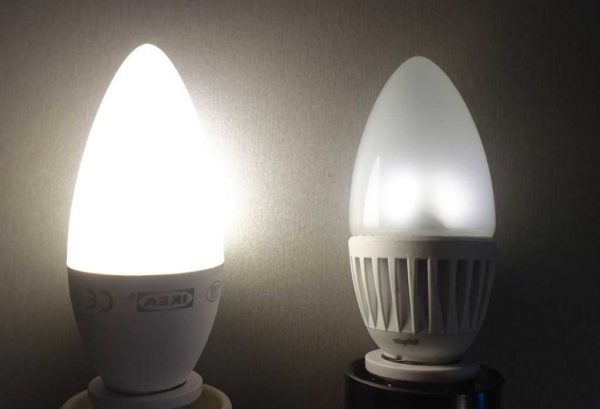
To choose an LED lamp for connection with a dimmer, look for the dimming limit in the characteristics
But, if you need to choose an LED lamp with a dimmer in the network, there should be a mark in the technical characteristics that it is dimmable. The normal one will shine in full force, and at a certain position of the dimmer it will simply start blinking.
In addition to the fact that the lamp must be dimmable, you must look at the dimming limit. Some have a minimum dimming limit of 5%, others 20%.
Manufacturer rating
Choosing an LED lamp according to technical parameters is not all. You still have to decide on the manufacturer. In light of the fact that LED lamps are not so cheap, I want to save money and buy from those that are cheaper. These are, as a rule, Chinese lighting devices, and from that do not differ at least in normal quality. Their distinguishing feature is poor packaging, lack of a warranty period, or it is, but very small. They are collected mainly from the cheapest parts, as a result of which the color rendering index (real, not written) may not exceed 60, due to poor-quality parts in the lamp converter, it flickers. It is difficult to talk about the service life of such products - how lucky you are. In general, no matter how much you want to save money, it is better to choose an LED lamp from the products of normal manufacturers.
Highest quality
Very good products are produced by the European firms Philips and Osram. Their offices are located in Europe, but the factories are mainly located in China. Despite this, they produce very good quality LED lamps. The image must be maintained, because the quality is strictly controlled. This is true, but their prices are also high. Philips LED lamps cost from 800 to 1800 rubles apiece, Osram has budget lines with a cost of about 100 rubles, there is a premium one with a price of 2700 rubles, and an average range is from 400 to 800 rubles.
Normal quality at a low price
The best combination of price and quality can be found in the middle price category. There are Russian manufacturers, there are Chinese manufacturers, and some other Asian countries are also represented. The products of these companies have mostly good product ratings. Also, the stated data coincide with the realities:
- Russian company Feron (Feron). One of the areas of activity is the production of LED-based lighting devices.Prices from 60 rubles for low-power built-in, up to 360 rubles.
- Camelion (Camelion). The Hong Kong-based campaign is releasing several lines with different bases. Prices from 75 rubles to 400.
- St. Petersburg firm Jazzway (Jazzway). Manufactures LED lamps with various caps, bulb and tubular. The price range is about the same - from 100 to 370 rubles for lamps of normal power (up to 20 W), there are powerful ones (for 30-60 W), their price is from 3700 to 6700 rubles.
- Another Russian company Gauss is considered the leader of this market among domestic manufacturers. Prices - from 83 rubles for lines with not the best characteristics, up to 1600 rubles for super-economical ones.
- Another representative of Russia is the Navigator campaign. They differ in that they have a reliable driver, which ensures the stable operation of the lamps even at reduced voltage (from 170 V to 250 V). Prices - from 60 rubles for small ones with a pin base to 800 rubles for products with increased efficiency.
- And one more Russian company - Era (Era). This brand has recently been on the market, but it has good reviews and very competitive prices - from 100 to 500 rubles. What sets them apart is consistent quality.
- Selecta (Selecta) is a Chinese company whose products receive consistently normal reviews. Prices are approximately in the same range - from 80 to 750 rubles.
- Another representative of the Celestial Empire Estares (Estares). Lamps in luminaires cost from 200 to 500 rubles, thin recessed - from 1200 to 1700 rubles.
There are still many other firms, but the reviews on the products of these firms are often negative. If you want to choose a good quality LED lamp for reasonable money, take a look at the above mentioned brands.

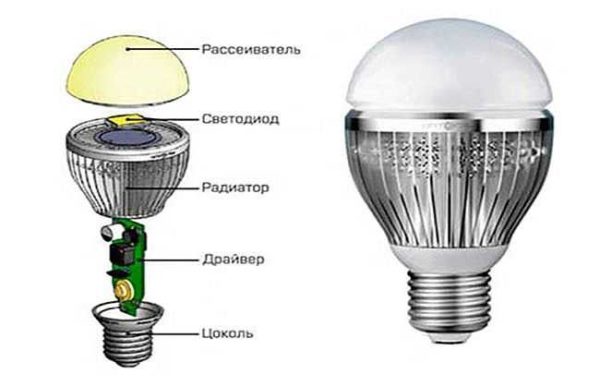
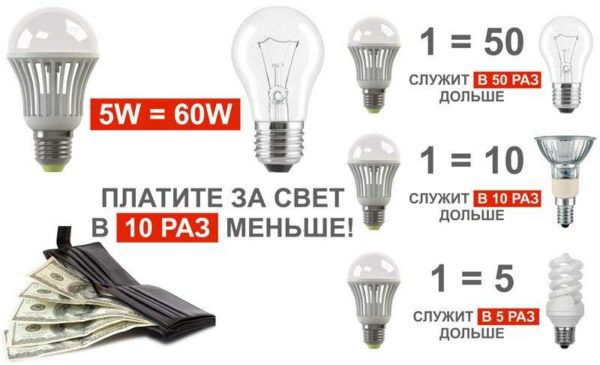
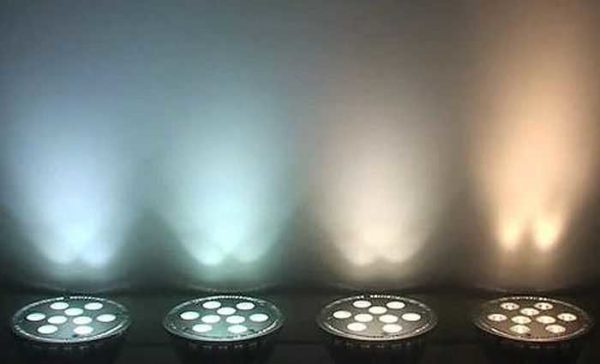
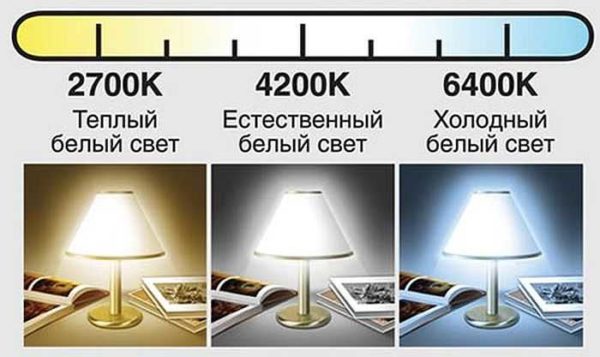

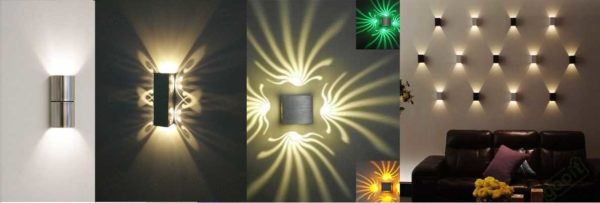
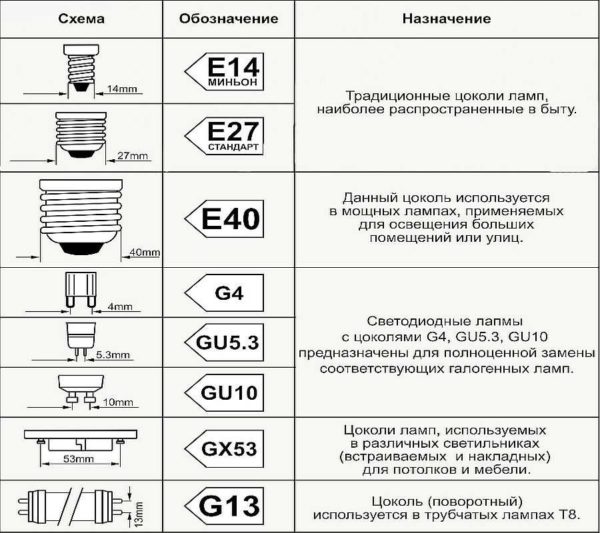
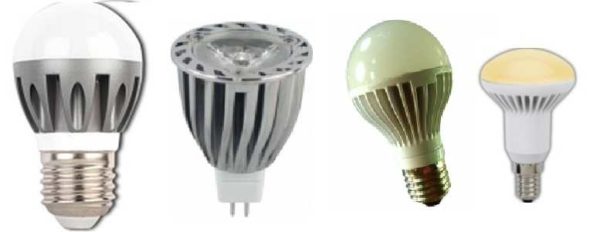
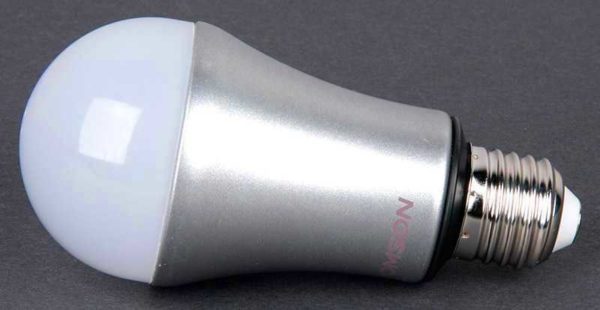
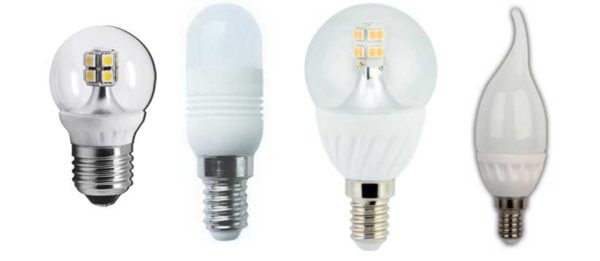
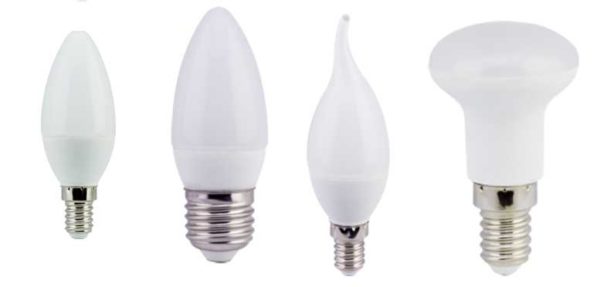
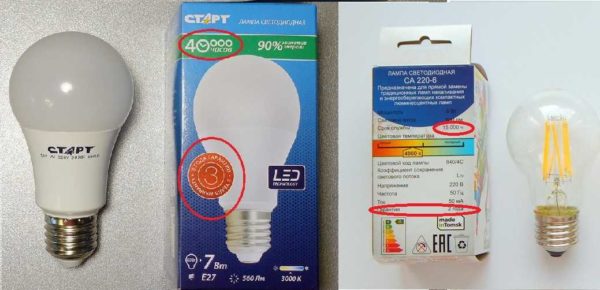
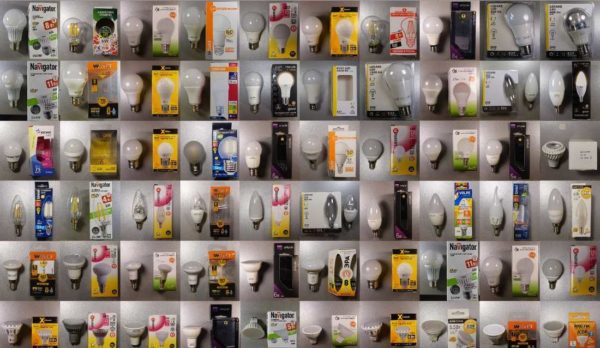
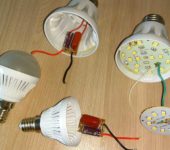
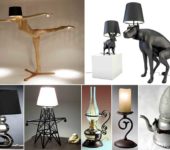
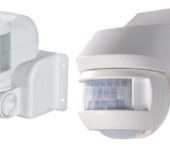
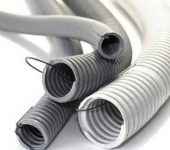
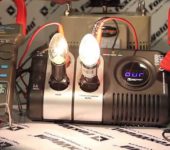





Advertising is certainly a great force, but it is not true. Everything determines the ratio of service life - lamp cost. While the service life of conventional incandescent lamps is much higher than LED and even more so halogen, no matter how manufacturers resist this. They don't know how to make them, or maybe they just don't want to, more burned out - more sold.
Are we talking about some branded incandescent lamps? If you take those that are sold on every corner, then they burn out very quickly. Chinese bulbs from aliexpress are screwed into the boiler room of the house - inside there are only LEDs, a pair of capacitors and a damping resistor. Has worked for about 5 years. As for such LED lamps as "Switch on", they burn out about once every half a year. I screwed it into the cellar - it burned down on the very first day, i.e. moisture is absolutely not tolerated. For the cellar, incandescent lamps are really better, since energy-saving ones also burn out instantly. Those. where there is electronic filling, cannot be used in damp rooms.